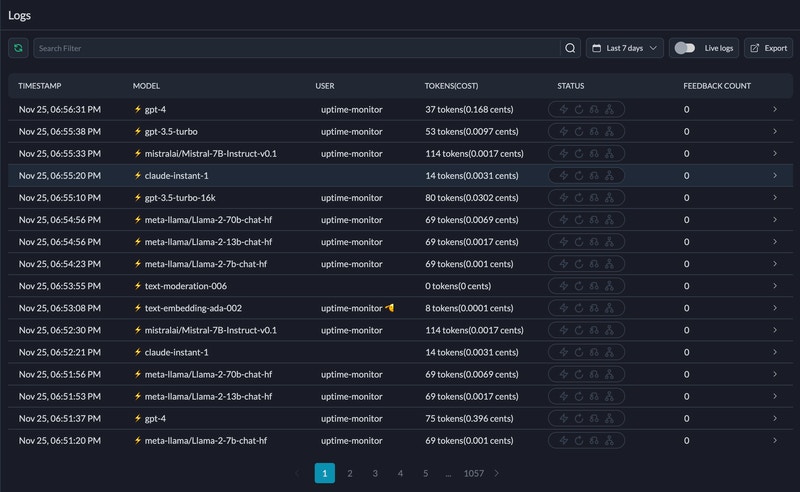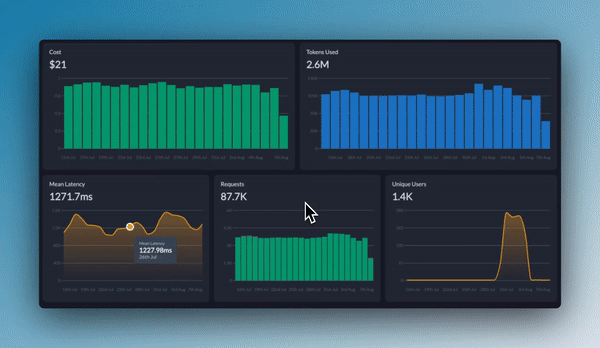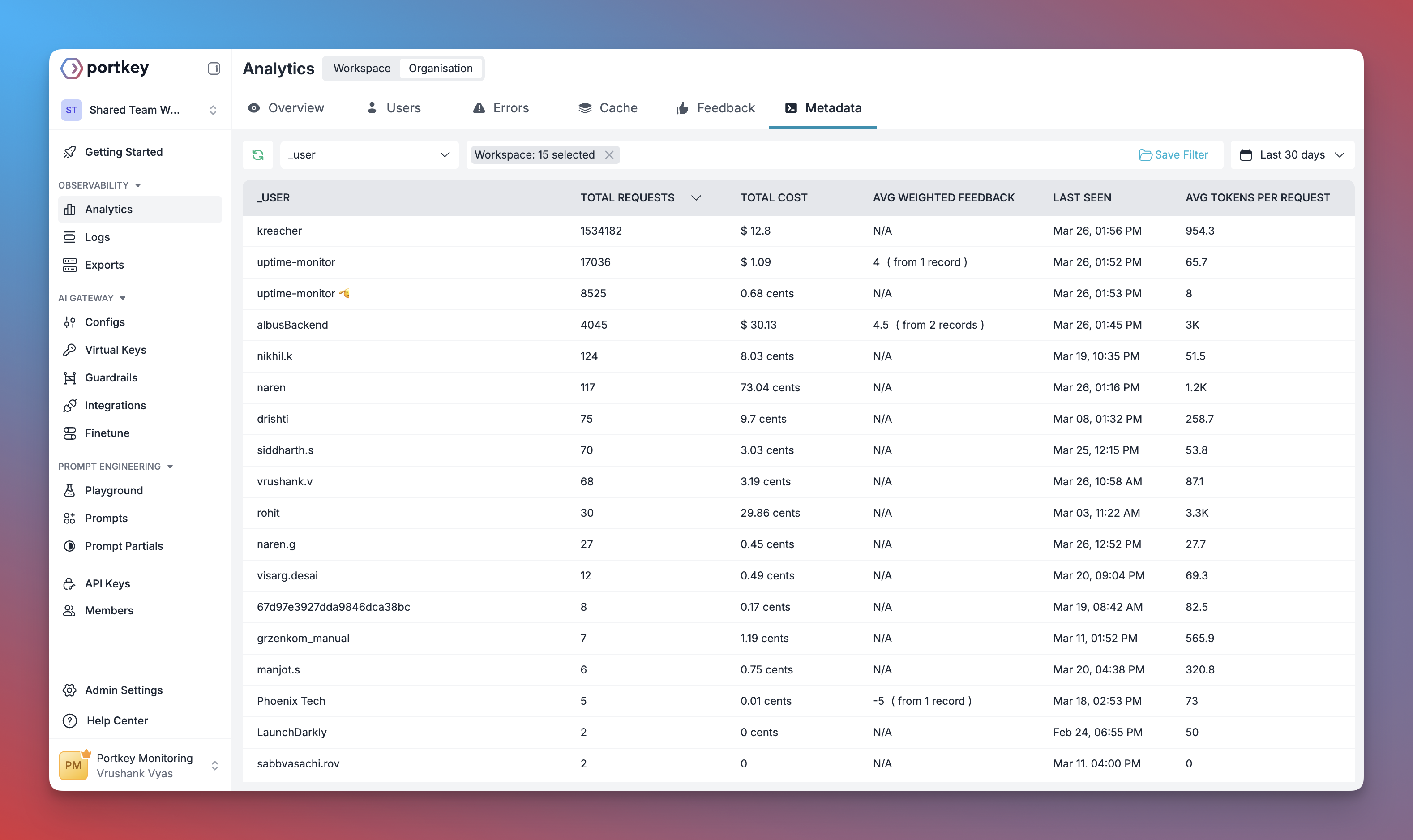Introduction
LangGraph is a library for building stateful, multi-actor applications with LLMs, designed to make developing complex agent workflows easier. It provides a flexible framework to create directed graphs where nodes process information and edges define the flow between them. Portkey enhances LangGraph with production-readiness features, turning your experimental agent workflows into robust systems by providing:- Complete observability of every agent step, tool use, and state transition
- Built-in reliability with fallbacks, retries, and load balancing
- Cost tracking and optimization to manage your AI spend
- Access to 1600+ LLMs through a single integration
- Guardrails to keep agent behavior safe and compliant
- Version-controlled prompts for consistent agent performance
LangGraph Official Documentation
Learn more about LangGraph’s core concepts and features
Installation & Setup
1
Install the required packages
- For search capabilities:
pip install langchain_community - For memory functionality:
pip install langgraph[checkpoint]
Generate API Key
Create a Portkey API key with optional budget/rate limits from the Portkey dashboard. You can attach configurations for reliability, caching, and more to this key.
3
Configure LangChain with Portkey
For a simple setup, configure a LangChain ChatOpenAI instance to use Portkey:
Basic Agent Implementation
Let’s create a simple LangGraph chatbot using Portkey. This example shows how to set up a basic conversational agent:- Creates a state graph with a message history
- Configures a ChatOpenAI model with Portkey
- Defines a simple chatbot node that processes messages with the LLM
- Compiles the graph and provides a streaming interface for chat
Advanced Features
1. Adding Tools to Your Agent
LangGraph can be enhanced with tools to allow your agent to perform actions. Here’s how to add the Tavily search tool:This example requires a Tavily API key for the search functionality. You can sign up for one at Tavily’s website.
2. Creating Custom Tools
You can create custom tools for your agents using the@tool decorator. Here’s how to create a simple multiplication tool:
- Defines a Pydantic model for the tool’s input schema
- Creates a custom multiplication tool with the
@tooldecorator - Integrates it into LangGraph with a tool node
3. Adding Memory to Your Agent
For persistent conversations, you can add memory to your LangGraph agents:The
thread_id in the config allows you to maintain separate conversation threads for different users or contexts.Production Features
1. Enhanced Observability
Portkey provides comprehensive observability for your LangGraph agents, helping you understand exactly what’s happening during each execution.- Traces
- Logs
- Metrics & Dashboards
- Metadata Filtering
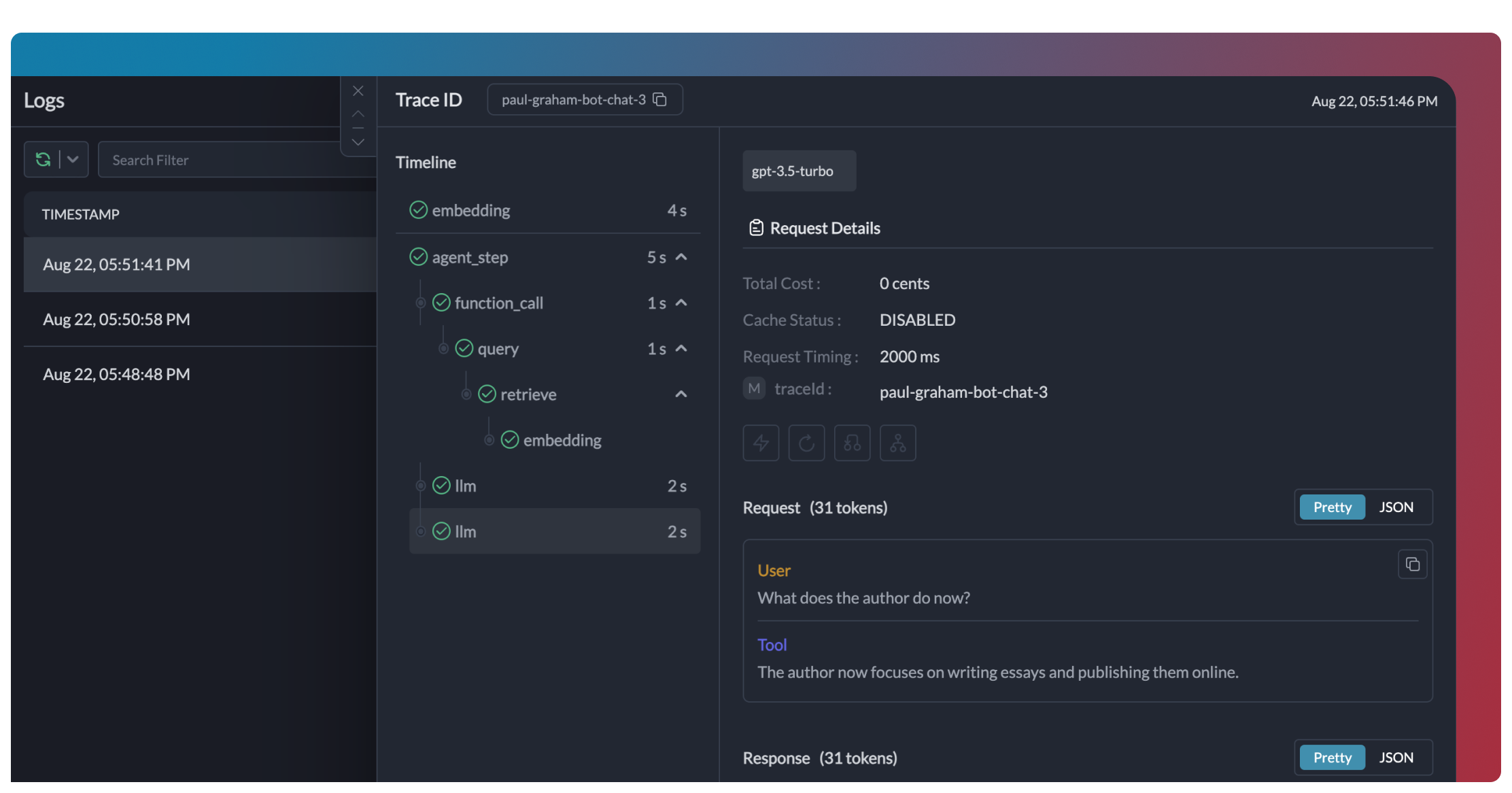
2. Reliability - Keep Your Agents Running Smoothly
When running agents in production, things can go wrong - API rate limits, network issues, or provider outages. Portkey’s reliability features ensure your agents keep running smoothly even when problems occur. Enable fallback in your LangGraph agents by using a Portkey Config:Automatic Retries
Handles temporary failures automatically. If an LLM call fails, Portkey will retry the same request for the specified number of times - perfect for rate limits or network blips.
Request Timeouts
Prevent your agents from hanging. Set timeouts to ensure you get responses (or can fail gracefully) within your required timeframes.
Conditional Routing
Send different requests to different providers. Route complex reasoning to GPT-4, creative tasks to Claude, and quick responses to Gemini based on your needs.
Fallbacks
Keep running even if your primary provider fails. Automatically switch to backup providers to maintain availability.
Load Balancing
Spread requests across multiple API keys or providers. Great for high-volume agent operations and staying within rate limits.
3. Prompting in LangGraph
Portkey’s Prompt Engineering Studio helps you create, manage, and optimize the prompts used in your LangGraph agents. Instead of hardcoding prompts or instructions, use Portkey’s prompt rendering API to dynamically fetch and apply your versioned prompts.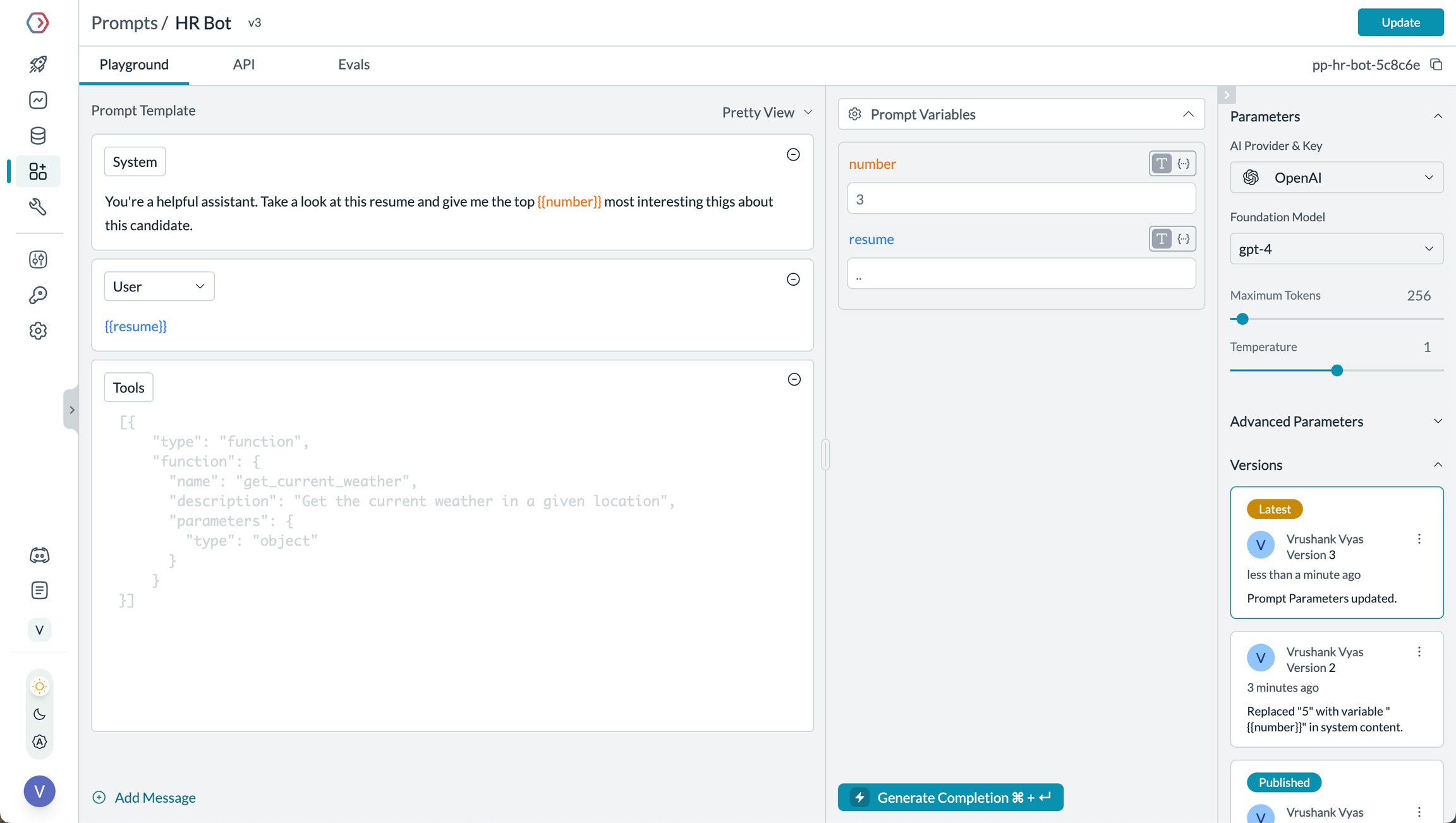
Manage prompts in Portkey's Prompt Library
- Prompt Playground
- Using Prompt Templates
- Prompt Versioning
- Mustache Templating for variables
Prompt Playground is a place to compare, test and deploy perfect prompts for your AI application. It’s where you experiment with different models, test variables, compare outputs, and refine your prompt engineering strategy before deploying to production. It allows you to:
- Iteratively develop prompts before using them in your agents
- Test prompts with different variables and models
- Compare outputs between different prompt versions
- Collaborate with team members on prompt development
Prompt Engineering Studio
Learn more about Portkey’s prompt management features
4. Guardrails for Safe Agents
Guardrails ensure your LangGraph agents operate safely and respond appropriately in all situations. Why Use Guardrails? LangGraph agents can experience various failure modes:- Generating harmful or inappropriate content
- Leaking sensitive information like PII
- Hallucinating incorrect information
- Generating outputs in incorrect formats
- Detect and redact PII in both inputs and outputs
- Filter harmful or inappropriate content
- Validate response formats against schemas
- Check for hallucinations against ground truth
- Apply custom business logic and rules
Learn More About Guardrails
Explore Portkey’s guardrail features to enhance agent safety
5. User Tracking with Metadata
Track individual users through your LangGraph agents using Portkey’s metadata system. What is Metadata in Portkey? Metadata allows you to associate custom data with each request, enabling filtering, segmentation, and analytics. The special_user field is specifically designed for user tracking.
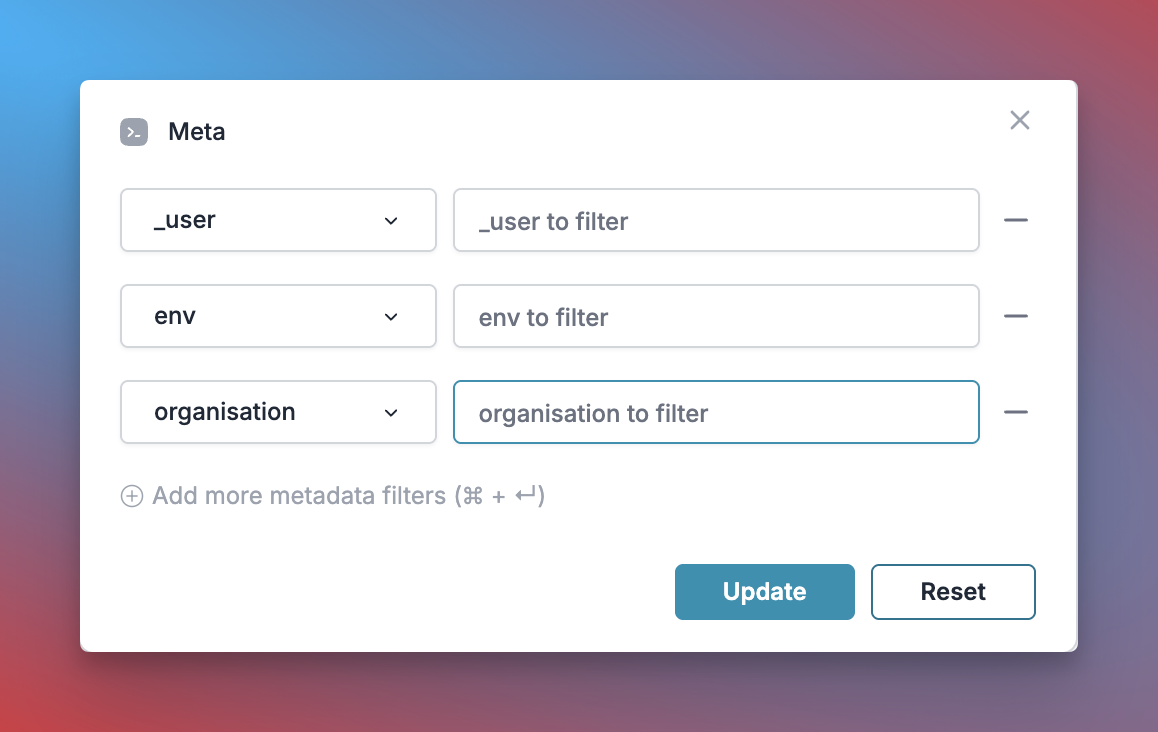
Filter analytics by user
- Per-user cost tracking and budgeting
- Personalized user analytics
- Team or organization-level metrics
- Environment-specific monitoring (staging vs. production)
Learn More About Metadata
Explore how to use custom metadata to enhance your analytics
6. Caching for Efficient Agents
Implement caching to make your LangGraph agents more efficient and cost-effective:- Simple Caching
- Semantic Caching
7. Model Interoperability
LangGraph works with multiple LLM providers, and Portkey extends this capability by providing access to over 200 LLMs through a unified interface. You can easily switch between different models without changing your core agent logic:- OpenAI (GPT-4o, GPT-4 Turbo, etc.)
- Anthropic (Claude 3.5 Sonnet, Claude 3 Opus, etc.)
- Mistral AI (Mistral Large, Mistral Medium, etc.)
- Google Vertex AI (Gemini 1.5 Pro, etc.)
- Cohere (Command, Command-R, etc.)
- AWS Bedrock (Claude, Titan, etc.)
- Local/Private Models
Supported Providers
See the full list of LLM providers supported by Portkey
Set Up Enterprise Governance for LangGraph
Why Enterprise Governance? If you are using LangGraph inside your organization, you need to consider several governance aspects:- Cost Management: Controlling and tracking AI spending across teams
- Access Control: Managing which teams can use specific models
- Usage Analytics: Understanding how AI is being used across the organization
- Security & Compliance: Maintaining enterprise security standards
- Reliability: Ensuring consistent service across all users
1
Create Integration
To create a new LLM integration:
Go to Integrations in the Portkey App. Set budget / rate limits, model access if required and save the integration.This creates a “Portkey Provider” that you can then use in any of your Portkey requests without having to send auth details for that LLM provider again.
2
Create Config
Configs in Portkey define how your requests are routed, with features like advanced routing, fallbacks, and retries.To create your config: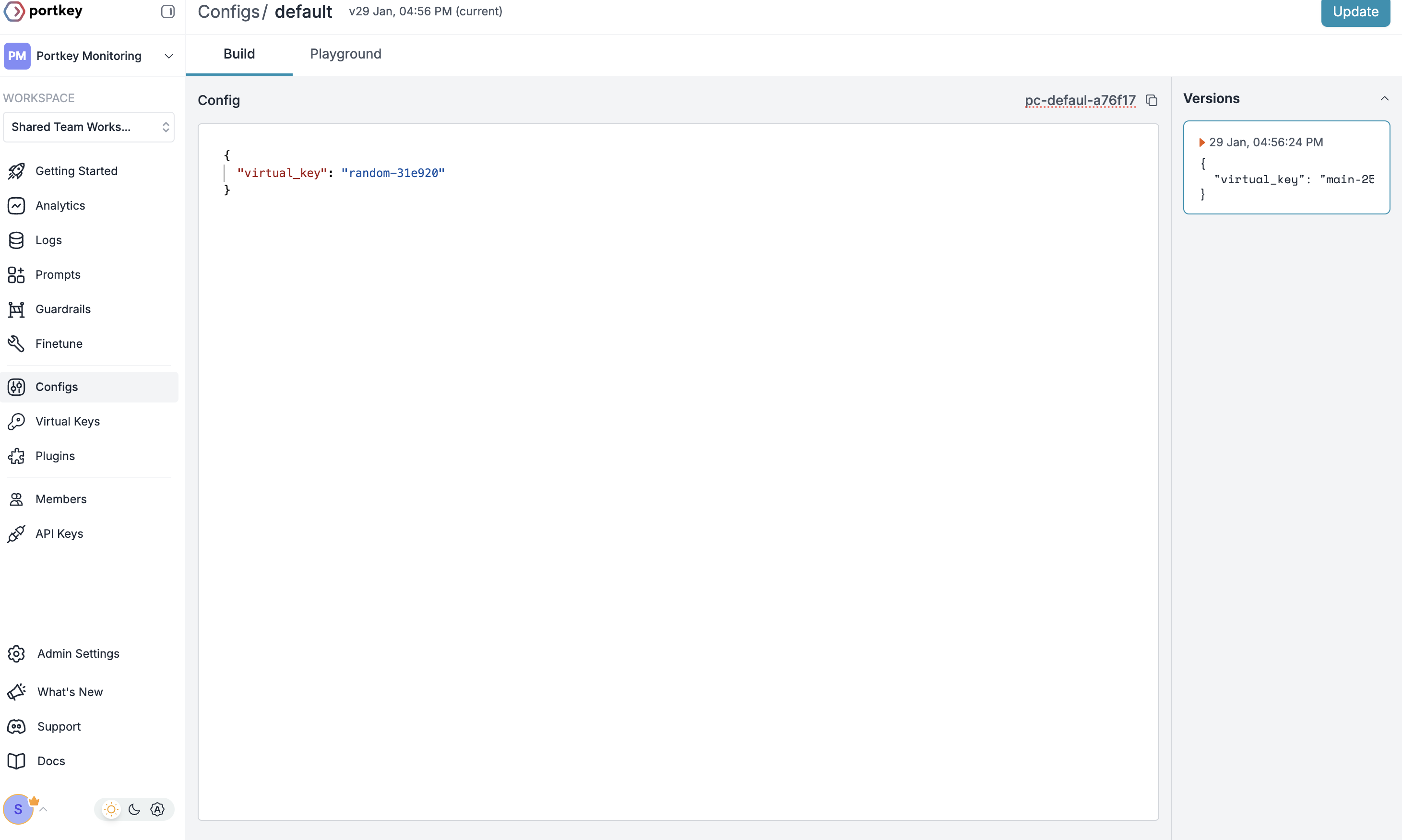
- Go to Configs in Portkey dashboard
- Create new config with:
- Save and note the Config name for the next step

3
Configure Portkey API Key
Now create a Portkey API key and attach the config you created in Step 2:
- Go to API Keys in Portkey and Create new API key
- Select your config from
Step 2 - Generate and save your API key

4
Connect to LangGraph
After setting up your Portkey API key with the attached config, connect it to your LangGraph agents:
Step 1: Implement Budget Controls & Rate Limits
Step 1: Implement Budget Controls & Rate Limits
Step 1: Implement Budget Controls & Rate Limits
Integrations enable granular control over LLM access at the team/department level. This helps you:- Set up budget limits
- Prevent unexpected usage spikes using Rate limits
- Track departmental spending
Setting Up Department-Specific Controls:
- Navigate to Integrations in Portkey dashboard and create a new Integration.
- Provision this Integration for each department with their budget limits and rate limits
- Configure model access if required.
Step 2: Define Model Access Rules
Step 2: Define Model Access Rules
Step 2: Define Model Access Rules
As your AI usage scales, controlling which teams can access specific models becomes crucial. Portkey Configs provide this control layer with features like:Access Control Features:
- Model Restrictions: Limit access to specific models
- Data Protection: Implement guardrails for sensitive data
- Reliability Controls: Add fallbacks and retry logic
Example Configuration:
Here’s a basic configuration to route requests to OpenAI, specifically using GPT-4o:Configs can be updated anytime to adjust controls without affecting running applications.
Step 3: Implement Access Controls
Step 3: Implement Access Controls
Step 3: Implement Access Controls
Create User-specific API keys that automatically:- Track usage per user/team with the help of metadata
- Apply appropriate configs to route requests
- Collect relevant metadata to filter logs
- Enforce access permissions
Step 4: Deploy & Monitor
Step 4: Deploy & Monitor
Step 4: Deploy & Monitor
After distributing API keys to your team members, your enterprise-ready LangGraph setup is ready to go. Each team member can now use their designated API keys with appropriate access levels and budget controls.Monitor usage in Portkey dashboard:- Cost tracking by department
- Model usage patterns
- Request volumes
- Error rates
Enterprise Features Now Available
Your LangGraph integration now has:- Departmental budget controls
- Model access governance
- Usage tracking & attribution
- Security guardrails
- Reliability features
Frequently Asked Questions
How does Portkey enhance LangGraph?
How does Portkey enhance LangGraph?
Portkey adds production-readiness to LangGraph through comprehensive observability (traces, logs, metrics), reliability features (fallbacks, retries, caching), and access to 1600+ LLMs through a unified interface. This makes it easier to debug, optimize, and scale your agent workflows.
Can I use Portkey with existing LangGraph applications?
Can I use Portkey with existing LangGraph applications?
Yes! Portkey integrates seamlessly with existing LangGraph applications. You just need to replace your LLM initialization code with the Portkey-enabled version. The rest of your graph code remains unchanged.
Does Portkey work with all LangGraph features?
Does Portkey work with all LangGraph features?
Portkey supports all LangGraph features, including tools, memory, conditional routing, and complex multi-node workflows. It adds observability and reliability without limiting any of the framework’s functionality.
How do I filter logs and traces for specific graph runs?
How do I filter logs and traces for specific graph runs?
Portkey allows you to add custom metadata and trace IDs to your LLM calls, which you can then use for filtering. Add fields like
graph_id, workflow_type, or session_id to easily find and analyze specific graph executions.Can I use LangGraph's memory features with Portkey?
Can I use LangGraph's memory features with Portkey?
Yes! The examples in this documentation show how to use LangGraph’s
MemorySaver checkpointer with Portkey-enabled LLMs. All the memory and state management features work seamlessly with Portkey.

